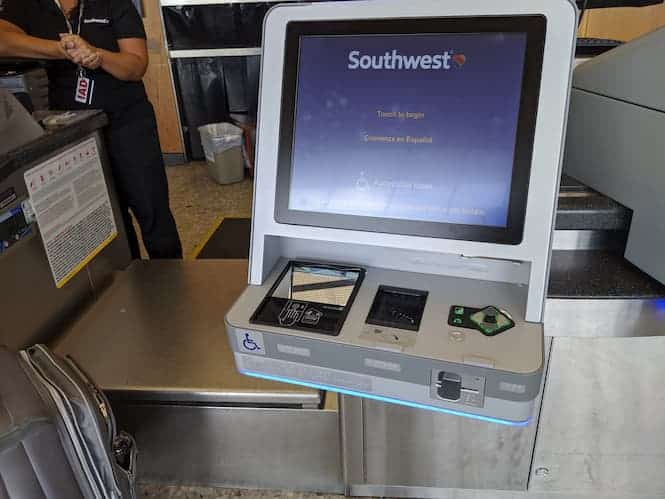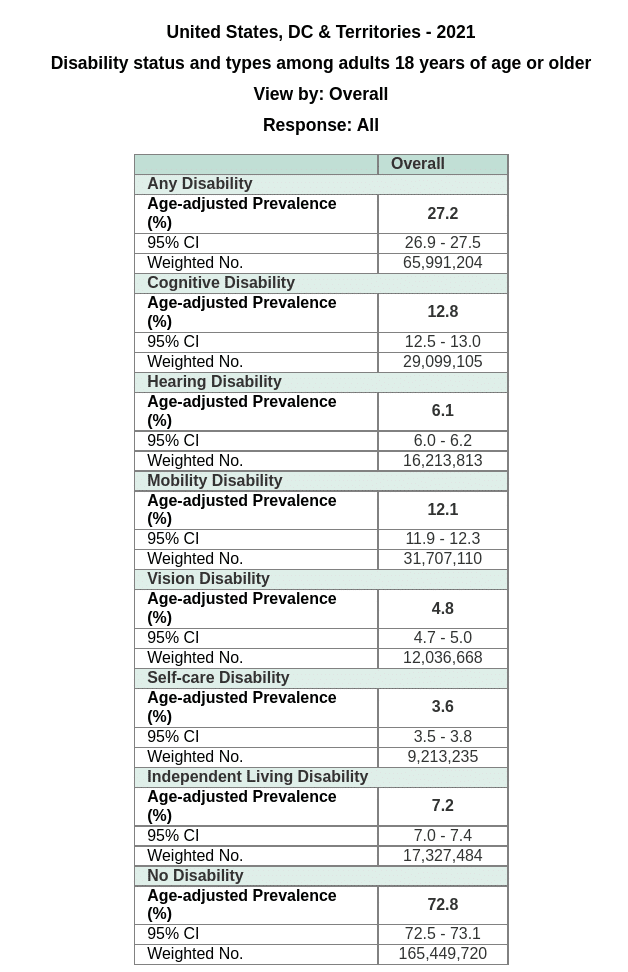
Assistive Technology for Unattended
Assistive technology refers to a wide range of tools and services that help people with disabilities live more independently and participate fully in society. Some of the most common types of assistive technology include:
- Braille: Braille is a tactile writing system that uses raised dots to represent letters and numbers. It is used by people who are blind or have low vision.
- Tactile navigation: Tactile navigation uses raised or textured surfaces to help people with visual impairments find their way around. It can be found on sidewalks, in buildings, and on public transportation.
- Audio: Audio assistive technology includes devices such as audiobooks, speech synthesizers, and screen readers that convert text to speech. It is used by people who are blind, have low vision, or have learning disabilities.
- Screen readers: Screen readers are software programs that read text aloud from computer screens. They are used by people who are blind or have low vision.
- Multilingual: Assistive technology can be multilingual, supporting multiple languages and dialects. This is important for people who speak more than one language or who live in multilingual communities.
Assistive technology has come a long way in recent years, and there are now many innovative and affordable options available. As technology continues to develop, we can expect to see even more powerful and effective assistive technology tools in the future.
Craig Keefner, director of kiosk association adds, “New regulations regarding assistive technology are set to be released shortly by the U.S. Access Board. Guidelines for EV charging stations as well as Self-Service are on the table.”
Recently we added Dot Inc. with their assistive technology for Braille users — “We are thrilled to welcome Dot Inc. to the Accessibility Committee,” said Craig Keefner, Executive Director of KMA Kiosk Association. “Their dedication to accessibility aligns perfectly with our mission, and their contributions will be instrumental in shaping the future of assistive technology and inclusive kiosk technologies.”
Dot Inc. is known for its innovative solutions like Dot Pad, the first tactile graphic device for the visually impaired. It shows maps, images, and graphics in braille and tactile formats. Their Accessible kiosks combine tactile displays with other tech, making info easily accessible in stores and public places. At CES 2023, Dot Inc. received three awards, including one for Best Innovation in Accessibility.
What is Assistive Technology
Assistive technology refers to a diverse range of tools, devices, software, and equipment designed to enhance the independence, functionality, and quality of life of individuals with disabilities. These technologies are specifically tailored to accommodate various physical, sensory, cognitive, or communication impairments, aiming to bridge the accessibility gap and empower people to participate fully in society.
Assistive technology encompasses various solutions, including screen readers for visually impaired individuals, mobility aids such as wheelchairs and prosthetic limbs, speech-to-text software for those with communication difficulties, and adaptive computer interfaces. Additionally, it includes specialized apps and devices that facilitate daily tasks, from reading and writing to cooking and driving.
The significance of assistive technology cannot be overstated, as it fosters inclusivity and equal opportunities for people with disabilities, enabling them to pursue education, employment, and social engagement with greater autonomy. This field is continually evolving, driven by advancements in robotics, artificial intelligence, and human-computer interaction, promising even more innovative and effective solutions. As society increasingly recognizes the importance of accessibility and inclusivity, the role of assistive technology in enhancing the lives of individuals with disabilities will continue to expand and evolve.
Disabled Statistics – Who Does Assistive Technology Assist?
We researched disablity statistics in 2023.
What Does The CDC Say

CDC Data
Examples of assistive technology in real-life
- Restaurant ADA — McDonald’s self-order kiosks utilize multiple assistive technology
- Hospitality ADA — Marriott hotel check-in kiosks
- Transportation ADA — Southwest Airlines check-in kiosks
Assistive Technology Resources
- KioWare – built-in JAWS Kiosk support & Storm AudioPad for ready-made browser functionality. Also noTouch KioTouch
- Vispero – The world’s leading assistive technology provider for people who are blind or who are partially sighted.
- JAWS Kiosk is focused on delivering accessible kiosk solutions whether it’s through the incorporation of Freedom Scientific’s industry-leading screen reading software, JAWS®, or by utilizing TPG’s accessible design and technical implementation services.JAWS Kiosk Software –
- TPGi — a subsidiary of Vispero, TPG Interactive (TPGi) is a world-class accessibility solutions provider with a reputation for excellence. We help clients achieve end-to-end accessibility in their digital assets (websites, software applications, mobile applications, documents, etc.), as well as assist in embedding accessibility into their processes and procedures. Whether you are new to accessibility or mature in your accessibility processes, TPGi can assist your organization.
- Storm Interface — Storm Interface develops and manufactures responsive human interface devices for use in a wide range of public and industrial applications. The company’s award-winning products are now globally deployed, internationally recognized and widely acclaimed.
- Tech For All Consulting — For over 15 years, TFA’s expert teams have been providing consulting services to its clients to ensure the accessibility and usability of their products, websites, mobile apps, kiosks, and services. Tech for All’s Accessibility Compliance and Universal Design Services — Web, Mobile, and Multiplatform Applications — Kiosk and Self-Service Systems — Training — Planning and Strategy
- Dolphin Computer Access — Welcome people who are blind and partially sighted into your business by enabling them to fully engage with your self-service points through SuperNova Accessible Kiosks. SuperNova Accessible Kiosks can deliver a range of support—magnification, speech and full screen-reading—without expensive retrofits. SuperNova differentiates itself from other kiosk accessibility software through crystal clear magnification at any level, unrivaled intuitive touchscreen capabilities, 24 changeable color themes and full screen-reading with human-sounding voices. It’s also fully compatible with Storm AudioNav Keypads and the SuperNova API is customizable for your bespoke kiosk projects.
- MimoMonitors — Haptic Touchscreens — The first of its kind, this new 10.1” touchscreen leverages the durability, reliability, and quality of the Mimo Vue display and the groundbreaking technology of TanvasTouch to allow users to feel what they see on screen. The result is a multisensory experience that brings touch to life on a new dimension.
- dot inc. — Assistive Technology to build a Barrier-free world. Design with the user’s eye level in mind. Automatic and manual use provided for user’s ease and convenience. Braille, tactile, sign language, voice guidance, large font size Barrier-free features for all.
- SysTech Displays, Inc. — the Leader in Braille, ATM and Custom Signs
- Voice Software
Potential Consequences of Inaction with Assistive Technology
- You are missing out on serving a very large and growing consumer marketplace.
- June 16, 2021 — A proposed class of consumers with mobility disabilities has slapped the owner-operators of 139 Wendys franchise restaurants with a suit in Wisconsin federal court, claiming they violated the Americans with Disabilities Act by denying disabled customers full and equal access to the eateries.
- See Legal News for complete current and past litigations
- 2023 most recent is decision for ACB against Quest Diagnostics — attorney fees + remediation ($6M?)
Assistive Technology More Resources
- ADA Checklist – 20 Factors
- See the JAWS video
- ADA Page here onsite
- Ticketing ADA & POS ADA Panel Discussion Next Week with U.S. Access Board
- ADA Kiosk 2021 Update — Kiosk Lawsuits — Reasons To Be Accessible
- Europe ADA Standards – Update for 301-549 In Process
- ADA Checklist for Kiosks – 12 Point ADA, Accessibility and PCI
Quick Tips for ADA and Accessibility Compliance
- Tactile navigation is extremely critical component
- Tactile displays and tactile tablets for Braille are now available
- Audio — bidirectional audio is a requirement
- Screen Reader – needs to be automatically included
- Testing before deployment – test with multiple personas to determine exactly how accessible or inaccessible your kiosk is.
